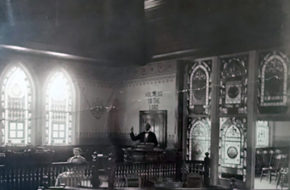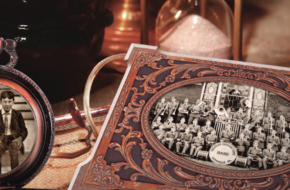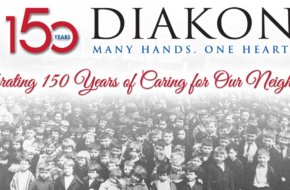In a long-ago article in T-LSA Now, I wrote, upon the retirement of the Rev. Dr. Harold Haas, that I could never bring myself to call him Harold.
That may have been because of my age (I was half the age I am today when I wrote that article), but it also stemmed from my respect for Dr. Haas (see, even now, I write Dr. Haas). He was simply a man, I told him and wrote about him, who engendered respect.
At the conclusion of that article, in light of his wishes, however, I wished “Harold” a happy retirement.
Unfortunately, another transition has occurred and I learned this week that Dr. Haas passed away in August at the age of 98. He had moved to New England some years ago to be near children and grandchildren; his wife, Evelyn, passed away two decades ago.
If Dr. Haas’ name is unfamiliar to you, that’s understandable, given the passage of time. Yet I believe it’s important you know who he was.
Harold Haas served as president of Tressler-Lutheran Service Associates (the T-LSA reference in the publication I mentioned) from 1977 through 1985, the year he retired and was succeeded by the Rev. Dr.Thomas Hurlocker. As president of Tressler Lutheran Services (as T-LSA eventually became), Tom Hurlocker would work alongside the Rev. Dr. Daun McKee, president of Lutheran Services Northeast, to fashion Diakon in 2000.
Dr. Haas came to Tressler in a period of uncertainty, the social ministry organization having rapidly expanded in the early 1970s without the necessary financial and administrative infrastructure. He spent the next near-decade not only successfully putting all the organizational ducks in a row, but also overseeing expansion and programmatic growth in a number of areas including refugee services, senior living communities and youth programs.
Formerly a parish pastor, professor and dean at Wagner College, Staten Island (where he had once been held hostage by students during racial unrest) and executive within the national Lutheran church, Dr. Haas, at Tressler, jokingly called himself a “consummate bureaucrat” because he knew his mission there was to make certain all of the processes, procedures and funding necessary to undergird a successful organization were in place and functioning efficiently.
(I purposely used the word undergird because, having joined Tressler a year after Dr. Haas following a brief period in journalism, I found the academic word “undergird” unfamiliar and grating. He and I good-naturedly sparred about its use on occasion and he would chuckle that when I edited his columns I took out all his “weasel words”—his tongue-in-cheek reference to phrases selected for bureaucratic use.)
When he began his work at Tressler, Dr. Haas had four earned degrees including an M.A. and a Ph.D. in sociology. He had been instrumental in the development of the national church’s social services and social statements, having demonstrated his personal commitment to justice as he marched in civil rights demonstrations in the South and testified on behalf of a Black South African in a court in that country.
A former bishop of the national church characterized Dr. Haas as having “great integrity, organizational skills and clarity of vision.” Following his retirement from Tressler, he continued his involvement in the national church, serving as well as interim pastor and then pastor-emeritus of Trinity Lutheran Church in Camp Hill, Pennsylvania.
For his work in guiding Tressler in achieving both efficiency and expansion, Dr. Haas occupies a prominent place among the dozen to two dozen dedicated leaders within Diakon’s near-150-year history who are ultimately responsible for the organization’s position and role today.
In a piece on his retirement, I wrote that Dr. Haas was “an accessible president, a man easily spoken to, a man of genuine charm and humility, one who has filled many occasions with warmth and wit [and one whose] leadership in giving the [organization] stability and ability to grow” positioned it well for the future.

Quite simply, I found him a brilliant but humble leader, a man I counted as a friend despite the difference in our ages.
Perhaps more cogently, a prominent Lutheran theologian described Dr. Haas as having a unique combination of “vision, horse sense, clarity, charity and refreshing candor.”
I last saw Dr. Haas around a decade ago when Diakon dedicated portraits of several past Tressler presidents. It was a pleasure to see him again.
I made sure to greet him as Harold.
By William Swanger
Senior Vice President
Corporate Communications & Public Relations
Because we review comments, they do not appear immediately. Please do not submit each comment more than once. Please review our comment policy.








